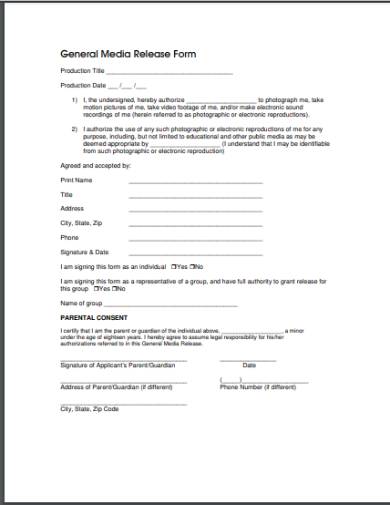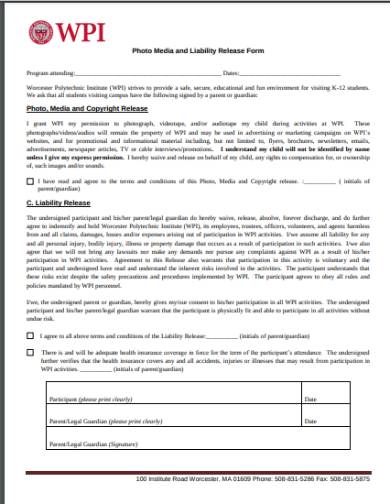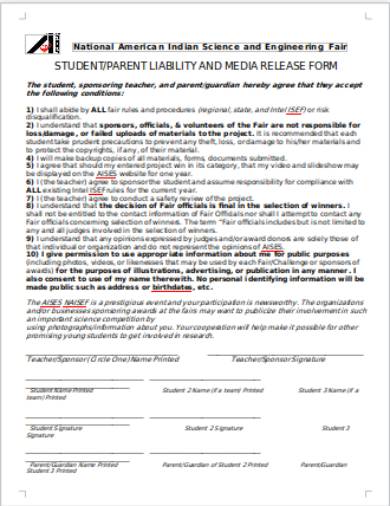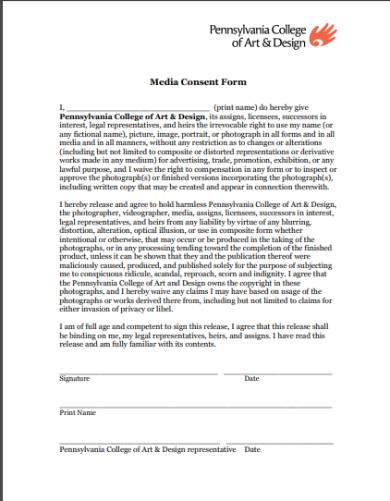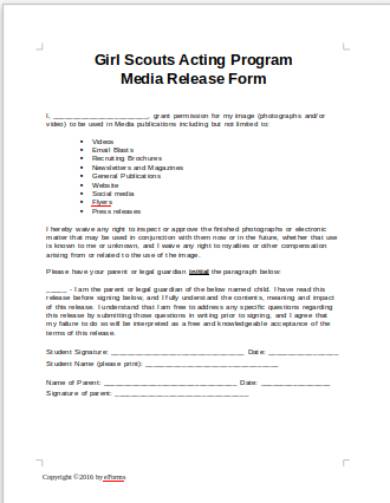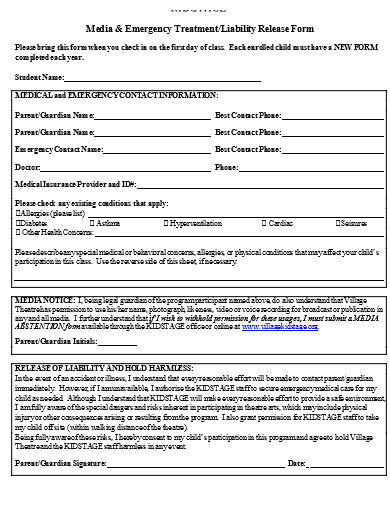Videography and Photography are a popular profession these days. Their services are highly sought out by people who want to capture moments on special occasions and events. If you’re aspiring to be one of these professionals, you need to be familiar with the legal obligations that are tied with this profession. One of these legal obligations you should be familiar with is getting the owner’s consent or permission to use their image and likeness legally through the use of a media liability release form for reference.
What Is a Media Liability Release Form
A Media Liability Release Form is a legal document that consents or permits a party to use, reproduce, edit, take pictures, and record the sound or voice of a person. A person must be of legal age to fill and sign the form. Anyone below that age requires the form to be completed and signed by a legal guardian. Aside from giving consent, media liability release form also waives a person’s right over their photos, videos, and audio recordings.
FREE 8+ Media Liability Release Forms in PDF | MS Word
College Media Liability Release Form
General Media Release Form
Photo and Media Liability Release Form
Media Consent and Liability Release Form
Student Media Liability and Consent Release Form
Media Liability Release and Consent Form
Theater Media Liability Release Form
School Media Liability Release Form
Media Emergency Liability Release Form
Coverage of a Media Liability Release
Personality rights protect a Person’s likeness, imagery, name, and other aspects of their identity. This right gives the Person the right to control the commercial use of objects associated with his/her identity, such as photos, videos, and audio recordings. To commercially use property or things protected under these rights, a media liability release agreement is drafted and signed by both parties to permit the use of objects associated with his/her identity, and his/her rights over those. There are other details covered by this type of agreement aside from its primary objective, which is the right of use. Listed below are other things covered by a media liability release agreement.
1. Right to Compensation and Royalties
In a Media Liability Release Agreement, the consenting party waives its right to compensation and royalties. It means that the consenting party are not entitled to compensation during production, as well as any portion of the proceeds from sales and fees from royalties. Besides, it also means that he/she can’t demand to be compensated in any way or receive any amount derived from royalties.
2. Right of Approval of the Final Product
In relation to the Right of Usage, signing the Media Liability Release Agreement will also compel the other party to waive his/her right over the approval of the final product. It means that the consenting party will have no control over how their image and likeness are used in the final product. Unless specified otherwise, the Right to Approve could be partially granted to the consenting party if it’s agreed and specified in the agreement.
How to Make a Media Liability Release Form
A Media Liability Release Form is primarily useful if you are working in the creative industry. Since there are existing laws protecting a person’s imagery and likeness, a consent agreement or waiver is required to use it freely and legally. Written below are the steps on how to make a Media Liability Release Form.
Step 1. Discuss the Terms and Conditions Beforehand
Before drafting a Media Liability Release Form, set up a meeting with the other party or client and discuss the terms and conditions of the agreement. Setting up a meeting beforehand enables both parties to agree about the scope and limitations of the use of the consenting party’s image and likeness. Also, it allows you to take note of what was agreed upon and use those in drafting the form.
Step 2. Make a Draft of the Media Liability Release Form
After discussing the terms and conditions of the agreement, the next step is creating the draft. In drafting the form make use of the notes you took down during the meeting. Make sure that you include the limitations agreed previously by you and the consenting party and any other terms previously or originally discussed.
Step 3. Download a Media Liability Release Form Template
Whenever you’re pressed for time, it’s always a good idea to download a template from the multitude of available templates on this website, right after you’re done drafting the agreement. Downloading a template of the form is taking the easiest and the fastest way in making one. By using a ready-made template, all that’s left for you to do is to fill in the spaces for information and do some minor editing. Choose among a variety of media liability release form templates provided by this article.
Step 4. Edit The Template
Edit the Media Liability Release Form Template right after downloading one. In editing the template, you must use the proper editing software for optimum results. During editing, fill in the spaces with the information asked by the form. If necessary, replace some of the stipulations with those that you and the consenting party agreed beforehand. Proofread the form to make sure that everything are in order.
Step 5. Print and Sign the Media Liability Release Form
Print the Media Liability Release Form right after you’re done editing it. Printing the form enables both you and the consenting party to review the document and re-discuss its content. After printing the form, affix both the consenting party’s and your signature on the signature block found on the form. Lastly, notarize the signed Media Liability Release Form so that it could be used as legal proof of consent should a dispute between you and the consenting party arise in the future.
Related Posts
-
FREE 12+ Sample Media Release Forms in MS Word | PDF | Excel
-
FREE 11+ Sample Liability Release Forms in PDF | MS Word | Excel
-
Minor Photo Release Form
-
Bond Release Form
-
FREE 22+ Print Release Forms in PDF | MS Word
-
Print Release Form
-
Copyright Release Form
-
Emergency Release Form
-
Patient Release Form
-
Release Form
-
FREE 9+ Property Release Forms in PDF | MS Word
-
FREE 10+ Equipment Release Forms in PDF
-
FREE 9+ Deed Release Forms in PDF | MS Word
-
FREE 10+ Artwork Release Forms in PDF | MS Word
-
FREE 10+ Image Release Forms in PDF | MS Word | Excel


